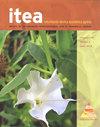Parámetros hematológicos y bioquímicos de vaquillas engordadas en corral bajo estrés calórico: Efecto de área de sombra y genotipo
IF 0.4
4区 农林科学
Q4 AGRICULTURE, DAIRY & ANIMAL SCIENCE
引用次数: 0
Abstract
The aim of the study was to determine the effect of two shade areas per animal on hematological and biochemical concentrations in Zebu and European heifers fattened under heat stress conditions. Fivehundred ten heifers (Zebu, European and its crosses) were randomly assigned to six pens divided in two shade areas: T1) three pens with 100 heifers per pen (shade area: 2.7 m2/animal), and T2) three pens with 70 heifers per pen (shade area: 3.7 m2/animal). Fifteen blood samples of each genotype per pen were collected three times (days 1, 28 and 66) during the study. To analyze metabolites, electrolytes and thyroid hormones, serum samples were used, while for hematological components fresh blood. Data was analyzed under a 2×2 factorial arrangement in a completely randomized design with repeated measurements. The temperature-humidity index averaged 81.7 units. In T1, both genotypes showed similar glucose concentration (P < 0.05), but in T2 glucose concentrations was higher in Zebu (P < 0.05). The urea level were lower (P < 0.05) in T2 than in T1. The Na+ level in T1 was higher (P < 0.05) than in T2. The Cl– in T1 was lower (P < 0.05) than in T2. The hormone T3 showed lower concentration (P < 0.05) in T1 compared to T2. No differences were detected for Htc and Hb between genotypes within T1 (P < 0.05), but they were higher in T2 for Zebu heifers (P < 0.05) than Europeans. Overall, the use of greater shade area did not show substantial differences in the physiology of fattening Zebu or European heifers during summer.热应激下肉牛的血液学和生化参数:阴影面积和基因型的影响
本研究的目的是确定在热应激条件下育肥的瘤牛和欧洲小母牛每头动物的两个遮荫区对血液和生化浓度的影响。510头小母牛(Zebu,欧洲及其杂交品种)被随机分配到6个栏中,分为两个阴影区:T1) 3个栏,每栏100头小母牛(阴影面积:2.7 m2/头),T2) 3个栏,每栏70头小母牛(阴影面积:3.7 m2/头)。在研究期间(第1天、第28天和第66天),每个笔采集每种基因型15份血样。分析代谢物、电解质和甲状腺激素,采用血清样品,血液成分采用新鲜血液。数据在2×2阶乘安排下进行分析,采用完全随机设计,重复测量。温湿指数平均为81.7。T1期两种基因型葡萄糖浓度相近(P < 0.05),但T2期瘤胃葡萄糖浓度较高(P < 0.05)。T2组尿素水平显著低于T1组(P < 0.05)。T1时Na+水平高于T2时(P < 0.05)。T1时Cl -明显低于T2时(P < 0.05)。T1期激素T3浓度低于T2期(P < 0.05)。T1内不同基因型之间Htc和Hb含量差异不显著(P < 0.05),但T2内Zebu母牛的Htc和Hb含量高于欧洲人(P < 0.05)。总体而言,使用更大的遮荫面积在夏季育肥牛和欧洲小母牛的生理上没有显着差异。
本文章由计算机程序翻译,如有差异,请以英文原文为准。
求助全文
约1分钟内获得全文
求助全文
来源期刊

Itea-Informacion Tecnica Economica Agraria
农林科学-农业经济与政策
CiteScore
0.90
自引率
0.00%
发文量
15
审稿时长
>12 weeks
期刊介绍:
ITEA publica artículos que hagan referencia a los distintos aspectos de las ciencias agro‑alimentarias, cuyo contenido sean resultados obtenidos, descripción de métodos, técnicas o materiales, presentación de nuevas ideas, etc.
 求助内容:
求助内容: 应助结果提醒方式:
应助结果提醒方式:


